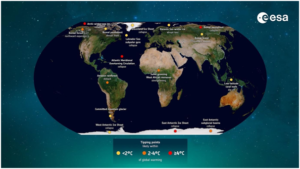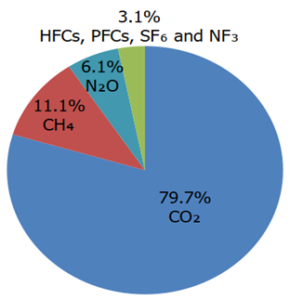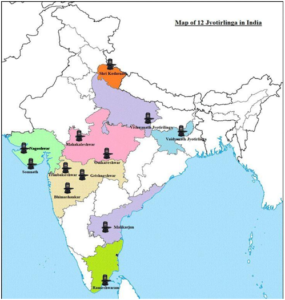IASbaba Prelims 60 Days Plan, Rapid Revision Series (RaRe)
Archives
Hello Friends
The 60 Days Rapid Revision (RaRe) Series is IASbaba’s Flagship Initiative recommended by Toppers and loved by the aspirants’ community every year.
It is the most comprehensive program which will help you complete the syllabus, revise and practice tests on a daily basis. The Programme on a daily basis includes
Daily Prelims MCQs from Static (Monday – Saturday)
- Daily Static Quiz will cover all the topics of static subjects – Polity, History, Geography, Economics, Environment and Science and technology.
- 20 questions will be posted daily and these questions are framed from the topics mentioned in the schedule.
- It will ensure timely and streamlined revision of your static subjects.
Daily Current Affairs MCQs (Monday – Saturday)
- Daily 5 Current Affairs questions, based on sources like ‘The Hindu’, ‘Indian Express’ and ‘PIB’, would be published from Monday to Saturday according to the schedule.
Daily CSAT Quiz (Monday – Friday)
- CSAT has been an Achilles heel for many aspirants.
- Daily 5 CSAT Questions will be published.
Note – Daily Test of 20 static questions, 10 current affairs, and 5 CSAT questions. (35 Prelims Questions) in QUIZ FORMAT will be updated on a daily basis.
To Know More about 60 Days Rapid Revision (RaRe) Series – CLICK HERE
60 Day Rapid Revision (RaRe) Series Schedule – CLICK HERE
Important Note
- Comment your Scores in the Comment Section. This will keep you accountable, responsible and sincere in days to come.
- It will help us come out with the Cut-Off on a Daily Basis.
- Let us know if you enjoyed today’s test 🙂
- You can post your comments in the given format
- (1) Your Score
- (2) Matrix Meter
- (3) New Learning from the Test
Test-summary
0 of 35 questions completed
Questions:
- 1
- 2
- 3
- 4
- 5
- 6
- 7
- 8
- 9
- 10
- 11
- 12
- 13
- 14
- 15
- 16
- 17
- 18
- 19
- 20
- 21
- 22
- 23
- 24
- 25
- 26
- 27
- 28
- 29
- 30
- 31
- 32
- 33
- 34
- 35
Information
The following Test is based on the syllabus of 60 Days Plan-2025 for UPSC IAS Prelims 2025.
To view Solutions, follow these instructions:
- Click on – ‘Start Test’ button
- Solve Questions
- Click on ‘Test Summary’ button
- Click on ‘Finish Test’ button
- Now click on ‘View Questions’ button – here you will see solutions and links.
You have already completed the test before. Hence you can not start it again.
Test is loading...
You must sign in or sign up to start the test.
You have to finish following test, to start this test:
Results
0 of 35 questions answered correctly
Your time:
Time has elapsed
You have scored 0 points out of 0 points, (0)
| Average score |
|
| Your score |
|
Categories
- Not categorized 0%
| Pos. | Name | Entered on | Points | Result |
|---|---|---|---|---|
| Table is loading | ||||
| No data available | ||||
- 1
- 2
- 3
- 4
- 5
- 6
- 7
- 8
- 9
- 10
- 11
- 12
- 13
- 14
- 15
- 16
- 17
- 18
- 19
- 20
- 21
- 22
- 23
- 24
- 25
- 26
- 27
- 28
- 29
- 30
- 31
- 32
- 33
- 34
- 35
- Answered
- Review
-
Question 1 of 35
1. Question
With reference to climate change, consider the following statements:
- Climate change refers to long-term shifts in temperatures and weather patterns.
- This term ‘global warming’ is interchangeable with the term ‘climate change.’
- The only reason attributed to climate change is anthropogenic activities such as burning of fossil fuels like coal, oil and gas.
Which of the above statements is/are correct?
Correct
Solution (a)
Explanation:
- Climate change refers to long-term shifts in temperatures and weather patterns. It is directly contributing to humanitarian emergencies from heatwaves, wildfires, floods, tropical storms and hurricanes and they are increasing in scale, frequency and intensity. It is therefore a threat multiplier, undermining and potentially reversing decades of health progress. Hence, statement 1 is correct.
- Global warming is the long-term heating of Earth’s surface observed since the pre-industrial period (between 1850 and 1900) due to human activities, primarily fossil fuel burning, which increases heat-trapping greenhouse gas levels in Earth’s atmosphere. This term is not interchangeable with the term “climate change.” Hence, statement 2 is not correct.
- Climate change can take place due to natural as well as anthropogenic reasons. The natural reasons include changes in the sun’s activity or large volcanic eruptions. But since the 1800s, human activities have been the main driver of climate change, primarily due to the burning of fossil fuels like coal, oil and gas. Hence, statement 3 is not correct.
Incorrect
Solution (a)
Explanation:
- Climate change refers to long-term shifts in temperatures and weather patterns. It is directly contributing to humanitarian emergencies from heatwaves, wildfires, floods, tropical storms and hurricanes and they are increasing in scale, frequency and intensity. It is therefore a threat multiplier, undermining and potentially reversing decades of health progress. Hence, statement 1 is correct.
- Global warming is the long-term heating of Earth’s surface observed since the pre-industrial period (between 1850 and 1900) due to human activities, primarily fossil fuel burning, which increases heat-trapping greenhouse gas levels in Earth’s atmosphere. This term is not interchangeable with the term “climate change.” Hence, statement 2 is not correct.
- Climate change can take place due to natural as well as anthropogenic reasons. The natural reasons include changes in the sun’s activity or large volcanic eruptions. But since the 1800s, human activities have been the main driver of climate change, primarily due to the burning of fossil fuels like coal, oil and gas. Hence, statement 3 is not correct.
-
Question 2 of 35
2. Question
Consider the following:
- Greenland icesheet loss
- Amazon rainforest dieback
- Boreal permafrost collapse
- Atlantic Meridional Oceanic Circulation (AMOC) cessation
Which of the above are considered as climate tipping points?
Correct
Solution (d)
Explanation:
- The Intergovernmental Panel on Climate Change (IPCC) Sixth Assessment Report defines tipping points as “critical thresholds in a system that, when exceeded, can lead to a significant change in the state of the system, often with an understanding that the change is irreversible.” Moreover, breaching one tipping point can increase the likelihood of crossing others — triggering a catastrophic domino effect. For instance, unabated global warming can cause irreversible ice melt from the Greenland ice sheet. This could slow down the ocean’s circulation of heat, the Atlantic Meridional Overturning Circulation (AMOC), which, in turn, could impact South America’s monsoon system. Changes in the monsoon system may lead to a rise in the frequency of droughts in the Amazon rainforest. Hence, option d is the correct answer.
 Incorrect
Incorrect
Solution (d)
Explanation:
- The Intergovernmental Panel on Climate Change (IPCC) Sixth Assessment Report defines tipping points as “critical thresholds in a system that, when exceeded, can lead to a significant change in the state of the system, often with an understanding that the change is irreversible.” Moreover, breaching one tipping point can increase the likelihood of crossing others — triggering a catastrophic domino effect. For instance, unabated global warming can cause irreversible ice melt from the Greenland ice sheet. This could slow down the ocean’s circulation of heat, the Atlantic Meridional Overturning Circulation (AMOC), which, in turn, could impact South America’s monsoon system. Changes in the monsoon system may lead to a rise in the frequency of droughts in the Amazon rainforest. Hence, option d is the correct answer.

-
Question 3 of 35
3. Question
Consider the following gases:
- Carbon Dioxide (CO2)
- Methane (CH4)
- Nitrous Oxide (N2O)
- Water Vapour
How many of the above can be considered as greenhouse gases (GHGs)?
Correct
Solution (d)
Explanation:
- Greenhouse gases (GHGs) warm the Earth by absorbing energy and slowing the rate at which the energy escapes to space; they act like a blanket insulating the Earth. Atmospheric gases like Carbon Dioxide (CO2), Methane (CH4), Nitrous Oxide (N2O), Water Vapour, and Chlorofluorocarbons (CFCs) can trap the out-going infrared radiation from the earth’s surface. Therefore, these gases are known as greenhouse gases (GHGs), and the heating effect is known as the greenhouse effect. Hence, option d is the correct answer.
 Incorrect
Incorrect
Solution (d)
Explanation:
- Greenhouse gases (GHGs) warm the Earth by absorbing energy and slowing the rate at which the energy escapes to space; they act like a blanket insulating the Earth. Atmospheric gases like Carbon Dioxide (CO2), Methane (CH4), Nitrous Oxide (N2O), Water Vapour, and Chlorofluorocarbons (CFCs) can trap the out-going infrared radiation from the earth’s surface. Therefore, these gases are known as greenhouse gases (GHGs), and the heating effect is known as the greenhouse effect. Hence, option d is the correct answer.

-
Question 4 of 35
4. Question
With respect to black carbon (soot), consider the following statements:
- Black carbon increases global warming by increasing albedo of the earth after getting deposited on snow.
- It can stay in the atmosphere for decades and it has a longer lifetime than carbon dioxide.
- It heats the atmosphere directly by absorbing more sunlight when compared to carbon dioxide.
How many of the statements given above is/are correct?
Correct
Solution (a)
Explanation:
- Black carbon, commonly known as soot, is a component of fine particulate air pollution (PM 2.5). It is formed by the incomplete combustion of wood and fossil fuels, a process which also creates carbon dioxide (CO2), carbon monoxide, and volatile organic compounds. It warms the earth by reducing (not increasing) albedo when deposited on snow. Hence, statement 1 is not correct.
- Black carbon is said to be one of the largest contributors to climate change after CO2. But unlike CO2, which can stay in the atmosphere for years together, black carbon is short-lived and remains only for days to weeks before it descends as rain or snow. Hence, statement 2 is not correct.
The black carbon (soot) is the strongest absorber of sunlight (a lot more than carbon dioxide) and heats the air directly. Among aerosols (such as brown carbon, sulphates), Black Carbon has been recognized as the second most important anthropogenic agent for climate change and the primary marker to understand the adverse effects caused by air pollution. Hence, statement 3 is correct.
Incorrect
Solution (a)
Explanation:
- Black carbon, commonly known as soot, is a component of fine particulate air pollution (PM 2.5). It is formed by the incomplete combustion of wood and fossil fuels, a process which also creates carbon dioxide (CO2), carbon monoxide, and volatile organic compounds. It warms the earth by reducing (not increasing) albedo when deposited on snow. Hence, statement 1 is not correct.
- Black carbon is said to be one of the largest contributors to climate change after CO2. But unlike CO2, which can stay in the atmosphere for years together, black carbon is short-lived and remains only for days to weeks before it descends as rain or snow. Hence, statement 2 is not correct.
The black carbon (soot) is the strongest absorber of sunlight (a lot more than carbon dioxide) and heats the air directly. Among aerosols (such as brown carbon, sulphates), Black Carbon has been recognized as the second most important anthropogenic agent for climate change and the primary marker to understand the adverse effects caused by air pollution. Hence, statement 3 is correct.
-
Question 5 of 35
5. Question
With respect to Global Warming Potential (GWP), consider the following statements:
- The reference gas used for measuring global warming potential is Carbon Dioxide.
- Methane and Chlorofluorocarbons have higher global warming potential when compared to Carbon Dioxide.
Which of the above statements is/are correct?
Correct
Solution (c)
Explanation:
- CO2, by definition, has a GWP of 1 regardless of the time period used, because it is the gas being used as the reference. CO2 remains in the climate system for a very long time: CO2 emissions cause increases in atmospheric concentrations of CO2 that will last thousands of years. Hence, statement 1 is correct.
- Methane (CH4) is estimated to have a GWP of 27-30 over 100 years. Nitrous Oxide (N2O) has a GWP 273 times that of CO2 for a 100-year timescale. Chlorofluorocarbons (CFCs), hydrofluorocarbons (HFCs), hydrochlorofluorocarbons (HCFCs), perfluorocarbons (PFCs), and sulphur hexafluoride (SF6) are sometimes called high-GWP gases because, for a given amount of mass, they trap substantially more heat than CO2. Hence, statement 2 is correct.
Incorrect
Solution (c)
Explanation:
- CO2, by definition, has a GWP of 1 regardless of the time period used, because it is the gas being used as the reference. CO2 remains in the climate system for a very long time: CO2 emissions cause increases in atmospheric concentrations of CO2 that will last thousands of years. Hence, statement 1 is correct.
- Methane (CH4) is estimated to have a GWP of 27-30 over 100 years. Nitrous Oxide (N2O) has a GWP 273 times that of CO2 for a 100-year timescale. Chlorofluorocarbons (CFCs), hydrofluorocarbons (HFCs), hydrochlorofluorocarbons (HCFCs), perfluorocarbons (PFCs), and sulphur hexafluoride (SF6) are sometimes called high-GWP gases because, for a given amount of mass, they trap substantially more heat than CO2. Hence, statement 2 is correct.
-
Question 6 of 35
6. Question
Consider the following statements:
- GRIHA is a rating tool that evaluates the environmental performance of a building holistically over its entire life cycle.
- The GRIHA rating system is developed by NITI Aayog.
Which of the above statements is/are correct?
Correct
Solution (a)
Explanation:
- GRIHA is an acronym for Green Rating for Integrated Habitat Assessment. GRIHA is a Sanskrit word meaning ‘Abode.’ It is a rating tool that helps people assesses the performance of their building against certain nationally acceptable benchmarks. It evaluates the environmental performance of a building holistically over its entire life cycle, thereby providing a definitive standard for what constitutes a ‘green building.’ Hence, statement 1 is correct.
- The GRIHA rating system, based on accepted energy and environmental principles is developed by TERI (The Energy and Resources Institute) and it has been adopted by the Ministry of New and Renewable Energy. It assesses a building out of 34 criteria and awards points on a scale of 100. In order to qualify for GRIHA certification, a project must achieve at least 50 points. Hence, statement 2 is not correct.
Incorrect
Solution (a)
Explanation:
- GRIHA is an acronym for Green Rating for Integrated Habitat Assessment. GRIHA is a Sanskrit word meaning ‘Abode.’ It is a rating tool that helps people assesses the performance of their building against certain nationally acceptable benchmarks. It evaluates the environmental performance of a building holistically over its entire life cycle, thereby providing a definitive standard for what constitutes a ‘green building.’ Hence, statement 1 is correct.
- The GRIHA rating system, based on accepted energy and environmental principles is developed by TERI (The Energy and Resources Institute) and it has been adopted by the Ministry of New and Renewable Energy. It assesses a building out of 34 criteria and awards points on a scale of 100. In order to qualify for GRIHA certification, a project must achieve at least 50 points. Hence, statement 2 is not correct.
-
Question 7 of 35
7. Question
Which of the following best describes the term ‘Arctic Amplification?’
Correct
Solution (b)
Explanation:
- The Arctic is warming twice to three times as fast as the rest of the planet due to sea ice loss—a phenomenon known as Arctic amplification. As sea ice declines, it becomes younger and thinner, and therefore becomes more vulnerable to further melting. This warming is more concentrated in the Eurasian part of the Arctic, where the Barents Sea north of Russia and Norway is warming at an alarming rate- almost seven times faster than the global average. Hence, option b is the correct answer.
Incorrect
Solution (b)
Explanation:
- The Arctic is warming twice to three times as fast as the rest of the planet due to sea ice loss—a phenomenon known as Arctic amplification. As sea ice declines, it becomes younger and thinner, and therefore becomes more vulnerable to further melting. This warming is more concentrated in the Eurasian part of the Arctic, where the Barents Sea north of Russia and Norway is warming at an alarming rate- almost seven times faster than the global average. Hence, option b is the correct answer.
-
Question 8 of 35
8. Question
With respect to coral reefs, consider the following statements:
- Coral reefs are made up of calcareous skeletons of thousands of tiny marine organisms called coral polyps.
- Polyps are deep, cold-water sea organisms with hard bodies covered by phosphorous layers.
- The world’s largest coral reef is situated on the eastern coast of North America.
Which of the above statements is/are correct?
Correct
Solution (a)
Explanation:
- Coral reefs are made up of calcareous skeletons of thousands of tiny marine organisms called coral polyps. They belong to the phylum cnidaria and occur in different forms and colours, depending upon the nature of the salts they are made of. Hence, statement 1 is correct.
- Polyps are shallow, warm-water organisms with soft bodies covered by calcareous skeletons. The polyps extract calcium salts from seawater to form these hard, tubular skeletons. Small marine plants (algae) also deposit calcium carbonate, contributing to coral growth. Hence, statement 2 is not correct.
The 2300-km-long Great Barrier Reef (GBR) off the NE coast of Australia is the world’s largest reef. It is not a single reef but a large complex consisting of many reefs. India’s major coral reef areas are located in the Andaman and Nicobar Islands, Lakshadweep, the Gulf of Mannar and the Gulf of Kachchh. Also, some coral reefs, over a period of time, transform or evolve into coral islands (e.g., Lakshadweep). Hence, statement 3 is not correct.
Incorrect
Solution (a)
Explanation:
- Coral reefs are made up of calcareous skeletons of thousands of tiny marine organisms called coral polyps. They belong to the phylum cnidaria and occur in different forms and colours, depending upon the nature of the salts they are made of. Hence, statement 1 is correct.
- Polyps are shallow, warm-water organisms with soft bodies covered by calcareous skeletons. The polyps extract calcium salts from seawater to form these hard, tubular skeletons. Small marine plants (algae) also deposit calcium carbonate, contributing to coral growth. Hence, statement 2 is not correct.
The 2300-km-long Great Barrier Reef (GBR) off the NE coast of Australia is the world’s largest reef. It is not a single reef but a large complex consisting of many reefs. India’s major coral reef areas are located in the Andaman and Nicobar Islands, Lakshadweep, the Gulf of Mannar and the Gulf of Kachchh. Also, some coral reefs, over a period of time, transform or evolve into coral islands (e.g., Lakshadweep). Hence, statement 3 is not correct.
-
Question 9 of 35
9. Question
The global agreement/protocol which has successfully protected the stratospheric ozone layer by phasing out the production and consumption of ozone-depleting substances is?
Correct
Solution (d)
Explanation:
- The Montreal Protocol on Substances that Deplete the Ozone Layer is the landmark multilateral environmental agreement that regulates the production and consumption of nearly 100 man-made chemicals referred to as ozone depleting substances (ODS). When released into the atmosphere, those chemicals damage the stratospheric ozone layer, Earth’s protective shield that protects humans and the environment from harmful levels of ultraviolet radiation from the sun. Adopted on 16 September 1987, the Protocol is to date one of the rare treaties to achieve universal ratification. Hence, option d is the correct answer.
Incorrect
Solution (d)
Explanation:
- The Montreal Protocol on Substances that Deplete the Ozone Layer is the landmark multilateral environmental agreement that regulates the production and consumption of nearly 100 man-made chemicals referred to as ozone depleting substances (ODS). When released into the atmosphere, those chemicals damage the stratospheric ozone layer, Earth’s protective shield that protects humans and the environment from harmful levels of ultraviolet radiation from the sun. Adopted on 16 September 1987, the Protocol is to date one of the rare treaties to achieve universal ratification. Hence, option d is the correct answer.
-
Question 10 of 35
10. Question
Consider the following issues:
- Pollution
- Climate change
- Biodiversity loss
- Antimicrobial Resistance
Which of the above together constitute the triple planetary crisis?
Correct
Solution (a)
Explanation:
The triple planetary crisis refers to the three main interlinked issues that humanity currently faces: climate change, pollution and biodiversity loss. This term underscores the interdependence of these issues and their collective impact on the planet’s ecosystems, societies, and economies. Each of these issues has its own causes and effects and each issue needs to be resolved if we are to have a viable future on this planet. Hence, option a is the correct answer.
Incorrect
Solution (a)
Explanation:
The triple planetary crisis refers to the three main interlinked issues that humanity currently faces: climate change, pollution and biodiversity loss. This term underscores the interdependence of these issues and their collective impact on the planet’s ecosystems, societies, and economies. Each of these issues has its own causes and effects and each issue needs to be resolved if we are to have a viable future on this planet. Hence, option a is the correct answer.
-
Question 11 of 35
11. Question
Consider the following statements about Eco Mark Scheme:
- Eco Mark is a voluntary labelling scheme for consumer products meeting Indian environmental criteria and quality standards.
- The Eco Mark Scheme is being administered by the Bureau of Indian Standards.
Which of the above statements is/are correct?
Correct
Solution (c)
Explanation:
- Eco Mark is a voluntary labelling scheme for consumer products meeting Indian environmental criteria and quality standards. The Scheme covers various product categories like Soaps and Detergents, Paints, Food Items, Lubricating Oils, Packing/Packaging Materials, Architectural Paints and Powder Coatings, Batteries, Electrical and Electronic Goods, Food Additives, Wood Substitutes, Cosmetics, Aerosols and Propellants, Plastic Products, Textiles, Fire-extinguisher, Leather and Coir & Coir Products. Hence, statement 1 is correct.
- ECO Mark Scheme was instituted by the Government of India for labeling of environment friendly products. It is being administered by the Bureau of Indian Standards. The presence of ECO Logo along with ISI Mark on a product indicates that the product meets certain Environmental criteria along with the Quality requirements as specified in the relevant Indian Standard. Hence, statement 2 is correct.
Incorrect
Solution (c)
Explanation:
- Eco Mark is a voluntary labelling scheme for consumer products meeting Indian environmental criteria and quality standards. The Scheme covers various product categories like Soaps and Detergents, Paints, Food Items, Lubricating Oils, Packing/Packaging Materials, Architectural Paints and Powder Coatings, Batteries, Electrical and Electronic Goods, Food Additives, Wood Substitutes, Cosmetics, Aerosols and Propellants, Plastic Products, Textiles, Fire-extinguisher, Leather and Coir & Coir Products. Hence, statement 1 is correct.
- ECO Mark Scheme was instituted by the Government of India for labeling of environment friendly products. It is being administered by the Bureau of Indian Standards. The presence of ECO Logo along with ISI Mark on a product indicates that the product meets certain Environmental criteria along with the Quality requirements as specified in the relevant Indian Standard. Hence, statement 2 is correct.
-
Question 12 of 35
12. Question
The world’s first-ever market for trading in particulate matter emissions was launched by?
Correct
Solution (d)
Explanation:
The Government of Gujarat in 2019 launched the world’s first-ever market for trading in particulate matter emissions in the city of Surat. The project called the Emission Trading Scheme, aims to reduce air pollution by allowing industries to ‘buy and sell’ permits for emitting particulate matter. Hence, option d is the correct answer.
Incorrect
Solution (d)
Explanation:
The Government of Gujarat in 2019 launched the world’s first-ever market for trading in particulate matter emissions in the city of Surat. The project called the Emission Trading Scheme, aims to reduce air pollution by allowing industries to ‘buy and sell’ permits for emitting particulate matter. Hence, option d is the correct answer.
-
Question 13 of 35
13. Question
Test question
Correct
Test explained
Incorrect
Test explained
-
Question 14 of 35
14. Question
Test question
Correct
Test explained
Incorrect
Test explained
-
Question 15 of 35
15. Question
Test question
Correct
Test explained
Incorrect
Test explained
-
Question 16 of 35
16. Question
Test question
Correct
Test explained
Incorrect
Test explained
-
Question 17 of 35
17. Question
Test question
Correct
Test explained
Incorrect
Test explained
-
Question 18 of 35
18. Question
Consider the following statements:
- They have high population density.
- They can be any organism, from animals and plants to bacteria and fungi.
- Role is same across different ecosystems.
Which of the statement/s above correctly describe a ‘Keystone species?
Correct
Solution (b)
Explanation:
- Keystone species do not necessarily have a high population density. In fact, many keystone species have relatively low population numbers but exert a disproportionate influence on their ecosystem. The impact of keystone species comes from the critical role they play in maintaining the structure and function of an ecosystem, not from their abundance. E.g.: Gray wolf in Yellowstone National Park (Statement 1 is incorrect)
- Keystone species can be found across all types of organisms, from animals and plants to microorganisms like bacteria and fungi. Their critical ecological roles can range from top predators that regulate prey populations to plants that provide essential resources for other species. E.g.: Sea otters, Beavers and certain Mangrove plants. (Statement 2 is correct)
The role of a keystone species is not the same across different ecosystems. A species’ role is specific to the ecosystem it inhabits. In one ecosystem, a species may function as a predator, while in another, it may be an ecosystem engineer or primary producer. Keystone species’ roles vary based on the structure and needs of the ecosystem they support. (Statement 3 is incorrect)
Incorrect
Solution (b)
Explanation:
- Keystone species do not necessarily have a high population density. In fact, many keystone species have relatively low population numbers but exert a disproportionate influence on their ecosystem. The impact of keystone species comes from the critical role they play in maintaining the structure and function of an ecosystem, not from their abundance. E.g.: Gray wolf in Yellowstone National Park (Statement 1 is incorrect)
- Keystone species can be found across all types of organisms, from animals and plants to microorganisms like bacteria and fungi. Their critical ecological roles can range from top predators that regulate prey populations to plants that provide essential resources for other species. E.g.: Sea otters, Beavers and certain Mangrove plants. (Statement 2 is correct)
The role of a keystone species is not the same across different ecosystems. A species’ role is specific to the ecosystem it inhabits. In one ecosystem, a species may function as a predator, while in another, it may be an ecosystem engineer or primary producer. Keystone species’ roles vary based on the structure and needs of the ecosystem they support. (Statement 3 is incorrect)
-
Question 19 of 35
19. Question
Consider the following pairs:
Region Endemic Species
- Hangul – Arunachal Pradesh
- Sanga deer – Wular lake
- Lemur – Seychelles
Which of the pairs above is/are correct?
Correct
Solution (d)
Explanation:
- The Hangul (Kashmir Stag) is not found in Arunachal Pradesh but is endemic to the Kashmir region of Jammu & Kashmir in India, specifically in Pachigam National Park. The Hangul is critically endangered, and efforts have been made to protect its dwindling population. (Pair 1 is incorrect)
- The Sanga deer is not found in Wular Lake. It is an endemic and endangered species of Manipur, specifically in the Kabul Lamai National Park, which is located on the Loka Lake, the largest freshwater lake in northeastern India. The Sanga is also known as the dancing deer due to its unique gait. (Pair 2 is incorrect)
Lemurs are not found in the Seychelles. They are endemic to Madagascar, an island country off the southeastern coast of Africa. Madagascar is home to over 100 species of lemurs, all of which are found nowhere else in the world. The Seychelles, located in the Indian Ocean, has its own unique fauna, but lemurs are native only to Madagascar. (Pair 3 is incorrect)
Incorrect
Solution (d)
Explanation:
- The Hangul (Kashmir Stag) is not found in Arunachal Pradesh but is endemic to the Kashmir region of Jammu & Kashmir in India, specifically in Pachigam National Park. The Hangul is critically endangered, and efforts have been made to protect its dwindling population. (Pair 1 is incorrect)
- The Sanga deer is not found in Wular Lake. It is an endemic and endangered species of Manipur, specifically in the Kabul Lamai National Park, which is located on the Loka Lake, the largest freshwater lake in northeastern India. The Sanga is also known as the dancing deer due to its unique gait. (Pair 2 is incorrect)
Lemurs are not found in the Seychelles. They are endemic to Madagascar, an island country off the southeastern coast of Africa. Madagascar is home to over 100 species of lemurs, all of which are found nowhere else in the world. The Seychelles, located in the Indian Ocean, has its own unique fauna, but lemurs are native only to Madagascar. (Pair 3 is incorrect)
-
Question 20 of 35
20. Question
Consider the following statements with respect to Indian Biodiversity:
- India is a mega diverse country in terms of biodiversity.
- Roughly 32% of Indian plants are endemic to the country.
- Approximately 62% of the amphibians found in India are unique to this country
Which of the statements above is/are correct?
Correct
Solution (d)
Explanation:
- India is recognized as one of the 17 mega-diverse countries in the world. These countries are considered to have exceptionally high levels of biodiversity and endemism. India has rich biodiversity across various ecosystems, including forests, wetlands, marine areas, and deserts. The country is home to about 8% of the world’s known species and is part of four global biodiversity hotspots. (Statement 1 is correct)
- India has a significant number of endemic plant species, meaning species that are found only in India. About 32% of Indian plant species are considered endemic. The Western Ghats, the Eastern Himalayas, and the Andaman and Nicobar Islands are known for high levels of plant endemism. Endemic plants play a critical role in India’s biodiversity and require focused conservation efforts. (Statement 2 is correct)
India is home to a variety of amphibian species, with a significant proportion being endemic. Approximately 62% of the amphibians found in India are unique to the country. This includes species that are found in specific regions, such as the Western Ghats, which is known for its rich diversity of amphibians, including frogs and toads. (Statement 3 is correct)
Incorrect
Solution (d)
Explanation:
- India is recognized as one of the 17 mega-diverse countries in the world. These countries are considered to have exceptionally high levels of biodiversity and endemism. India has rich biodiversity across various ecosystems, including forests, wetlands, marine areas, and deserts. The country is home to about 8% of the world’s known species and is part of four global biodiversity hotspots. (Statement 1 is correct)
- India has a significant number of endemic plant species, meaning species that are found only in India. About 32% of Indian plant species are considered endemic. The Western Ghats, the Eastern Himalayas, and the Andaman and Nicobar Islands are known for high levels of plant endemism. Endemic plants play a critical role in India’s biodiversity and require focused conservation efforts. (Statement 2 is correct)
India is home to a variety of amphibian species, with a significant proportion being endemic. Approximately 62% of the amphibians found in India are unique to the country. This includes species that are found in specific regions, such as the Western Ghats, which is known for its rich diversity of amphibians, including frogs and toads. (Statement 3 is correct)
-
Question 21 of 35
21. Question
Match the following:
Geographical indication (GI) Tag State - Tirupati Laddu
- Arunachal Pradesh
- Sadananda Shawl
- West Bengal
- Ancho Wooden Craft
- Odisha
- Kalo Nunia Rice
- Andhra Pradesh
Select the correct answer using the codes below:
Correct
Solution (d)
Explanation:
Context: The Vishwa Hindu Parishad (VHP) expressed anger over the reports of adulteration of animal fat in the Laddu prasad distributed at Tirupati temple and reiterated its position that Hindu temples and places of worship should be handed over to society rather than be controlled by governments.
Geographical indication (GI) Tag State - Tirupati Laddu
Andhra Pradesh - Sadananda Shawl
Odisha - Ancho Wooden Craft
Arunachal Pradesh - Kalo Nunia Rice
West Bengal Hence option d is correct.
Incorrect
Solution (d)
Explanation:
Context: The Vishwa Hindu Parishad (VHP) expressed anger over the reports of adulteration of animal fat in the Laddu prasad distributed at Tirupati temple and reiterated its position that Hindu temples and places of worship should be handed over to society rather than be controlled by governments.
Geographical indication (GI) Tag State - Tirupati Laddu
Andhra Pradesh - Sadananda Shawl
Odisha - Ancho Wooden Craft
Arunachal Pradesh - Kalo Nunia Rice
West Bengal Hence option d is correct.
-
Question 22 of 35
22. Question
With reference to the Food Import Rejection Alert Portal, consider the following statements:
- It is an online portal for notification of food import rejections at Indian borders.
- It has been developed by the Food and Agriculture Organization (FAO).
Which of the above statement/s is/are correct?
Correct
Solution (a)
Explanation:
Context: Various initiatives including Food Import Rejection Alerts (FIRA)- an online portal for notification of food import rejections at Indian borders and FICS 2.0 – an advanced website for the Food Import Clearance System, were launched during the 2-Day Global Food Regulators Summit.
- The Food Import Rejection Alert Portal is an online portal for notification of food import rejections at Indian borders. Hence statement 1 is correct.
- It is designed to notify the public and relevant food safety authorities about food import rejections at Indian borders.
- It will facilitate the rapid exchange of information among authorities worldwide on food safety and health risks stemming from rejected food.
- It will also enable relevant food authorities to take immediate action for the prevention and control of risks before they cause harm.
- It has been developed by the Food Safety Standards Authority of India (FSSAI). Hence statement 2 is incorrect.
- FSSAI is an autonomous body established under the Ministry of Health and Family Welfare, Government of India. It has been established under the Food Safety and Standards Act of 2006, which is a consolidating statute related to food safety and regulation in India.
Incorrect
Solution (a)
Explanation:
Context: Various initiatives including Food Import Rejection Alerts (FIRA)- an online portal for notification of food import rejections at Indian borders and FICS 2.0 – an advanced website for the Food Import Clearance System, were launched during the 2-Day Global Food Regulators Summit.
- The Food Import Rejection Alert Portal is an online portal for notification of food import rejections at Indian borders. Hence statement 1 is correct.
- It is designed to notify the public and relevant food safety authorities about food import rejections at Indian borders.
- It will facilitate the rapid exchange of information among authorities worldwide on food safety and health risks stemming from rejected food.
- It will also enable relevant food authorities to take immediate action for the prevention and control of risks before they cause harm.
- It has been developed by the Food Safety Standards Authority of India (FSSAI). Hence statement 2 is incorrect.
- FSSAI is an autonomous body established under the Ministry of Health and Family Welfare, Government of India. It has been established under the Food Safety and Standards Act of 2006, which is a consolidating statute related to food safety and regulation in India.
-
Question 23 of 35
23. Question
Debt Recovery Tribunals (DRTs) are specialized judicial bodies established under the Recovery of Debts Due to Banks and Financial Institutions Act of 1993 (DRT Act). DRT has which of the following powers?
- summoning and enforcing the attendance of any person and examining him on oath
- requiring the discovery and production of documents;
- issuing commissions for the examination of witnesses or documents;
- dismissing an application for default or deciding it ex parted;
How many of the above statements is/are correct?
Correct
Solution (d)
Explanation:
Context: The Finance Ministry asked banks to put in place effective monitoring and oversight mechanisms for efficient management of pending cases in Debt Recovery Tribunals (DRTs).
Debt Recovery Tribunals (DRTs) are specialized judicial bodies established under the
Recovery of Debts Due to Banks and Financial Institutions Act of 1993 (DRT Act). Its primary mandate is to adjudicate and resolve disputes concerning debt recovery from banks, financial institutions, and other specified entities. DRTs can take cases from banks for disputed loans above Rs 20 Lakh. DRTs have the following powers:
- summoning and enforcing the attendance of any person and examining him on oath
- requiring the discovery and production of documents;
- issuing commissions for the examination of witnesses or documents;
- dismissing an application for default or deciding it ex parted;
- receiving evidence on affidavits;
Hence option d is correct.
Incorrect
Solution (d)
Explanation:
Context: The Finance Ministry asked banks to put in place effective monitoring and oversight mechanisms for efficient management of pending cases in Debt Recovery Tribunals (DRTs).
Debt Recovery Tribunals (DRTs) are specialized judicial bodies established under the
Recovery of Debts Due to Banks and Financial Institutions Act of 1993 (DRT Act). Its primary mandate is to adjudicate and resolve disputes concerning debt recovery from banks, financial institutions, and other specified entities. DRTs can take cases from banks for disputed loans above Rs 20 Lakh. DRTs have the following powers:
- summoning and enforcing the attendance of any person and examining him on oath
- requiring the discovery and production of documents;
- issuing commissions for the examination of witnesses or documents;
- dismissing an application for default or deciding it ex parted;
- receiving evidence on affidavits;
Hence option d is correct.
-
Question 24 of 35
24. Question
Consider the following statements regarding Paliparan Marshland:
- It is a freshwater marsh and partly saline wetland situated in Kerala.
- It is one of the Ramsar sites in India.
Which of the above statement/s is/are correct?
Correct
Solution (b)
Explanation:
Context: The bathymetric study is underway in and around Paliparan marshland to assess the volume of sludge that can be dredged to enhance the marsh’s water-holding capacity and ecological functions.
- Paliparan Marshland is a freshwater marsh and partly saline wetland situated in Tamil Nadu. Hence statement 1 is incorrect.
- It serves as an aquatic buffer of the flood-prone Chennai and Chengalpattu districts.
- It encompasses 65 wetlands, through two outlets, viz., Okiya Kadavu and the Kosalam Creek, and falls into the Bay of Bengal.
- On its eastern periphery, the Marsh is flanked by the Buckingham Canal.
- It is one of the Ramsar sites in India. Hence statement 2 is correct.
Ramsar Sites in India State/U. T Kalavati Bird Sanctuary Tamil Nadu Longwood Shola Reserve Forest Tamil Nadu Magadi Kere Conservation Reserve Karnataka Anka Samudra Bird Conservation Reserve Karnataka Aghanashini Estuary Karnataka Tamara Lake Odisha Hikaru Reservoir Odisha Ansupa Lake Odisha Yashwant Sagar Madhya Pradesh Chitrangudi Bird Sanctuary Tamil Nadu Suchindram Theroor Wetland Complex Tamil Nadu Vaduvur Bird Sanctuary Tamil Nadu Kanjirankulam Bird Sanctuary Tamil Nadu Thane Creek Maharashtra Hygam Wetland Conservation Reserve Jammu and Kashmir Shellbug Wetland Conservation Reserve Jammu and Kashmir Nanda Lake Goa Karikili Bird Sanctuary Tamil Nadu Pallikaranai Marsh Reserve Forest Tamil Nadu Pichavaram Mangrove Forest Tamil Nadu Gulf of Mannar Marine Biosphere Reserve Tamil Nadu Vembanur Wetland Complex Tamil Nadu Vellode Bird Sanctuary Tamil Nadu Udayamarthandapuram Bird Sanctuary Tamil Nadu Vedanthangal Bird Sanctuary Tamil Nadu Ranganathittu Bird Sanctuary Karnataka Sakhya Sagar Madhya Pradesh Sirpur Wetland Madhya Pradesh Koonthankulam Bird Sanctuary Tamil Nadu Satkosia Gorge Odisha Pala Wetland Mizoram Bakhira Sanctuary Uttar Pradesh Bhindawas Wildlife Sanctuary Haryana Sultanpur National Park Haryana Haiderpur Wetland Uttar Pradesh Vadhvana Wetland Gujarat Thol Lake Gujarat Khijadiya Wildlife Sanctuary Gujarat Tso Kar Wetland Complex Union Territory of Ladakh Sur Sarovar Uttar Pradesh Asan Conservation Reserve Uttarakhand Kabartal Wetland Bihar Lonar Lake Maharashtra Saman Bird Sanctuary Uttar Pradesh Parvati Arga Bird Sanctuary Uttar Pradesh Samaspur Bird Sanctuary Uttar Pradesh Beas Conservation Reserve Punjab Keshopur-Miani Community Reserve Punjab Nangal Wildlife Sanctuary Punjab Nawabganj Bird Sanctuary Uttar Pradesh Sandi Bird Sanctuary Uttar Pradesh Sarsai Nawar Jheel Uttar Pradesh Nandur Madhameshwar Maharashtra Sundarban Wetland West Bengal Nalsarovar Bird Sanctuary Gujarat Upper Ganga River Uttar Pradesh Chandertal Wetland Himachal Pradesh Hokera Wetland Union Territory of Jammu and Kashmir Renuka Wetland Himachal Pradesh Rudrasagar Lake Tripura Surinsar-Mansar Lakes Union Territory of Jammu and Kashmir Ashtamudi Wetland Kerala Bhitarkanika Mangroves Odisha Bhoj Wetland Madhya Pradesh Deepor Beel Assam East Calcutta Wetlands West Bengal Kanjli Wetland Punjab Kolleru Lake Andhra Pradesh Point Calimere Wildlife and Bird Sanctuary Tamil Nadu Pong Dam Lake Himachal Pradesh Ropar Wetland Punjab Tsomoriri Union Territory of Ladakh Vembanad-Kol Wetland Kerala Sasthamkotta Lake Kerala Wular Lake Union Territory of Jammu and Kashmir Harike Wetland Punjab Loktak Lake Manipur Sambhar Lake Rajasthan Chilika Lake Odisha Keoladeo National Park Rajasthan Nagi Bird Sanctuary Bihar Nakti Bird Sanctuary Bihar Nanjarayan Bird Sanctuary Tamil Nadu Kazhuveli Bird Sanctuary Tamil Nadu Tawa Reservoir Madhya Pradesh Note:
The bathymetric study involves measuring underwater topography and is essential for developing comprehensive maps that can aid in determining the water storage capacity and flood patterns.
Incorrect
Solution (b)
Explanation:
Context: The bathymetric study is underway in and around Paliparan marshland to assess the volume of sludge that can be dredged to enhance the marsh’s water-holding capacity and ecological functions.
- Paliparan Marshland is a freshwater marsh and partly saline wetland situated in Tamil Nadu. Hence statement 1 is incorrect.
- It serves as an aquatic buffer of the flood-prone Chennai and Chengalpattu districts.
- It encompasses 65 wetlands, through two outlets, viz., Okiya Kadavu and the Kosalam Creek, and falls into the Bay of Bengal.
- On its eastern periphery, the Marsh is flanked by the Buckingham Canal.
- It is one of the Ramsar sites in India. Hence statement 2 is correct.
Ramsar Sites in India State/U. T Kalavati Bird Sanctuary Tamil Nadu Longwood Shola Reserve Forest Tamil Nadu Magadi Kere Conservation Reserve Karnataka Anka Samudra Bird Conservation Reserve Karnataka Aghanashini Estuary Karnataka Tamara Lake Odisha Hikaru Reservoir Odisha Ansupa Lake Odisha Yashwant Sagar Madhya Pradesh Chitrangudi Bird Sanctuary Tamil Nadu Suchindram Theroor Wetland Complex Tamil Nadu Vaduvur Bird Sanctuary Tamil Nadu Kanjirankulam Bird Sanctuary Tamil Nadu Thane Creek Maharashtra Hygam Wetland Conservation Reserve Jammu and Kashmir Shellbug Wetland Conservation Reserve Jammu and Kashmir Nanda Lake Goa Karikili Bird Sanctuary Tamil Nadu Pallikaranai Marsh Reserve Forest Tamil Nadu Pichavaram Mangrove Forest Tamil Nadu Gulf of Mannar Marine Biosphere Reserve Tamil Nadu Vembanur Wetland Complex Tamil Nadu Vellode Bird Sanctuary Tamil Nadu Udayamarthandapuram Bird Sanctuary Tamil Nadu Vedanthangal Bird Sanctuary Tamil Nadu Ranganathittu Bird Sanctuary Karnataka Sakhya Sagar Madhya Pradesh Sirpur Wetland Madhya Pradesh Koonthankulam Bird Sanctuary Tamil Nadu Satkosia Gorge Odisha Pala Wetland Mizoram Bakhira Sanctuary Uttar Pradesh Bhindawas Wildlife Sanctuary Haryana Sultanpur National Park Haryana Haiderpur Wetland Uttar Pradesh Vadhvana Wetland Gujarat Thol Lake Gujarat Khijadiya Wildlife Sanctuary Gujarat Tso Kar Wetland Complex Union Territory of Ladakh Sur Sarovar Uttar Pradesh Asan Conservation Reserve Uttarakhand Kabartal Wetland Bihar Lonar Lake Maharashtra Saman Bird Sanctuary Uttar Pradesh Parvati Arga Bird Sanctuary Uttar Pradesh Samaspur Bird Sanctuary Uttar Pradesh Beas Conservation Reserve Punjab Keshopur-Miani Community Reserve Punjab Nangal Wildlife Sanctuary Punjab Nawabganj Bird Sanctuary Uttar Pradesh Sandi Bird Sanctuary Uttar Pradesh Sarsai Nawar Jheel Uttar Pradesh Nandur Madhameshwar Maharashtra Sundarban Wetland West Bengal Nalsarovar Bird Sanctuary Gujarat Upper Ganga River Uttar Pradesh Chandertal Wetland Himachal Pradesh Hokera Wetland Union Territory of Jammu and Kashmir Renuka Wetland Himachal Pradesh Rudrasagar Lake Tripura Surinsar-Mansar Lakes Union Territory of Jammu and Kashmir Ashtamudi Wetland Kerala Bhitarkanika Mangroves Odisha Bhoj Wetland Madhya Pradesh Deepor Beel Assam East Calcutta Wetlands West Bengal Kanjli Wetland Punjab Kolleru Lake Andhra Pradesh Point Calimere Wildlife and Bird Sanctuary Tamil Nadu Pong Dam Lake Himachal Pradesh Ropar Wetland Punjab Tsomoriri Union Territory of Ladakh Vembanad-Kol Wetland Kerala Sasthamkotta Lake Kerala Wular Lake Union Territory of Jammu and Kashmir Harike Wetland Punjab Loktak Lake Manipur Sambhar Lake Rajasthan Chilika Lake Odisha Keoladeo National Park Rajasthan Nagi Bird Sanctuary Bihar Nakti Bird Sanctuary Bihar Nanjarayan Bird Sanctuary Tamil Nadu Kazhuveli Bird Sanctuary Tamil Nadu Tawa Reservoir Madhya Pradesh Note:
The bathymetric study involves measuring underwater topography and is essential for developing comprehensive maps that can aid in determining the water storage capacity and flood patterns.
-
Question 25 of 35
25. Question
With reference to Sustainable Aviation Fuel, consider the following statements:
- It is a solid fuel made from renewable biomass and waste resources.
- Its carbon footprint is significantly lower than aviation turbine fuel (ATF).
- It can be produced from waste oil and fats, green and municipal waste, and non-food crops.
Select the correct answer using the codes below:
Correct
Solution (b)
Explanation:
Context: India and Brazil, two leading biofuel producers, are well-positioned to collaborate on the production and use of Sustainable Aviation Fuels (SAF), by leveraging their existing ethanol and biodiesel production infrastructure, growing aviation market, and vast feedstock potential, including their agricultural resources.
- Sustainable Aviation Fuel is a liquid fuel made from renewable biomass and waste resources. Hence statement 1 is incorrect.
- It is ‘sustainable’ because the raw feedstock does not compete with food crops or water supplies, or is responsible for forest degradation.
- It has the potential to deliver the performance of petroleum-based jet fuel.
- Its carbon footprint is significantly lower than aviation turbine fuel (ATF). Hence statement 2 is correct.
- It is currently used in commercial aviation which reduces CO2 emissions by up to 80%.
- It can be produced from waste oil and fats, green and municipal waste, and non-food crops. Hence statement 3 is correct.
- It can also be produced synthetically via a process that captures carbon directly from the air.
Incorrect
Solution (b)
Explanation:
Context: India and Brazil, two leading biofuel producers, are well-positioned to collaborate on the production and use of Sustainable Aviation Fuels (SAF), by leveraging their existing ethanol and biodiesel production infrastructure, growing aviation market, and vast feedstock potential, including their agricultural resources.
- Sustainable Aviation Fuel is a liquid fuel made from renewable biomass and waste resources. Hence statement 1 is incorrect.
- It is ‘sustainable’ because the raw feedstock does not compete with food crops or water supplies, or is responsible for forest degradation.
- It has the potential to deliver the performance of petroleum-based jet fuel.
- Its carbon footprint is significantly lower than aviation turbine fuel (ATF). Hence statement 2 is correct.
- It is currently used in commercial aviation which reduces CO2 emissions by up to 80%.
- It can be produced from waste oil and fats, green and municipal waste, and non-food crops. Hence statement 3 is correct.
- It can also be produced synthetically via a process that captures carbon directly from the air.
-
Question 26 of 35
26. Question
Falkland Islands is an archipelago located in the South Atlantic Ocean, some 500 km from mainland South America. It is an internally self-governing overseas territory of which of the following country?
Correct
Solution (d)
Explanation:
Context: Researchers have found evidence that the treeless, rugged, grassland landscape of the Falkland Islands was home to a lush, diverse rainforest up to 30 million years ago.
The Falkland Islands is an archipelago located in the South Atlantic Ocean, some 500 km from mainland South America. It is an internally self-governing overseas territory of the United Kingdom. It comprises two large islands (East Falkland and West Falkland) and several hundred smaller ones. The two large islands are separated by Falkland Sound (strait). The islands are positioned both in the southern and western hemispheres of the Earth. It has a cool temperate oceanic climate that is characterised by its lack of extremes. Stanley (also, Port Stanley) is the capital of the Falkland Islands. The population of the Falkland Islands is English-speaking and consists primarily of Falklanders of African-Irish descent (88% of the population). Hence option d is correct.
Incorrect
Solution (d)
Explanation:
Context: Researchers have found evidence that the treeless, rugged, grassland landscape of the Falkland Islands was home to a lush, diverse rainforest up to 30 million years ago.
The Falkland Islands is an archipelago located in the South Atlantic Ocean, some 500 km from mainland South America. It is an internally self-governing overseas territory of the United Kingdom. It comprises two large islands (East Falkland and West Falkland) and several hundred smaller ones. The two large islands are separated by Falkland Sound (strait). The islands are positioned both in the southern and western hemispheres of the Earth. It has a cool temperate oceanic climate that is characterised by its lack of extremes. Stanley (also, Port Stanley) is the capital of the Falkland Islands. The population of the Falkland Islands is English-speaking and consists primarily of Falklanders of African-Irish descent (88% of the population). Hence option d is correct.
-
Question 27 of 35
27. Question
With reference to the Cancer Multi-Omics Data Portal, consider the following statements:
- It is India’s first platform providing open access to data from Indian cancer patients.
- It is launched by the Ministry of Health and Family Welfare.
- It will be the first in India to offer data that includes DNA, RNA, and protein profiles of breast cancer patients.
- Its data is freely accessible to the global research community under India’s PRIDE (Promotion of Research and Innovation through Data Exchange) guidelines.
How many of the above statements is/are correct?
Correct
Solution (c)
Explanation:
Context: In a step towards improving understanding of the genetic variations of cancer in the Indian population, the Indian Cancer Genome Atlas (ICGA) foundation has launched a portal that expects to be a repository of information on multiple aspects of cancer.
- Cancer Multi-Omics Data Portal is India’s first platform providing open access to data from Indian cancer patients. Hence statement 1 is correct.
- It is aimed at transforming cancer research and treatment for Indian populations.
- It is launched by the India Cancer Genome Atlas (ICGA) Foundation. Hence statement 2 is incorrect.
- It will be the first in India to offer data that includes DNA, RNA, and protein profiles of breast cancer patients. Hence statement 3 is correct.
- Currently, the platform consists of data from 50 breast cancer patients, with plans to expand to over 500 patients in the coming year.
- Its data is freely accessible to the global research community under India’s PRIDE (Promotion of Research and Innovation through Data Exchange) guidelines. Hence statement 4 is correct.
- It promotes ethical sharing and collaboration in cancer research.
Incorrect
Solution (c)
Explanation:
Context: In a step towards improving understanding of the genetic variations of cancer in the Indian population, the Indian Cancer Genome Atlas (ICGA) foundation has launched a portal that expects to be a repository of information on multiple aspects of cancer.
- Cancer Multi-Omics Data Portal is India’s first platform providing open access to data from Indian cancer patients. Hence statement 1 is correct.
- It is aimed at transforming cancer research and treatment for Indian populations.
- It is launched by the India Cancer Genome Atlas (ICGA) Foundation. Hence statement 2 is incorrect.
- It will be the first in India to offer data that includes DNA, RNA, and protein profiles of breast cancer patients. Hence statement 3 is correct.
- Currently, the platform consists of data from 50 breast cancer patients, with plans to expand to over 500 patients in the coming year.
- Its data is freely accessible to the global research community under India’s PRIDE (Promotion of Research and Innovation through Data Exchange) guidelines. Hence statement 4 is correct.
- It promotes ethical sharing and collaboration in cancer research.
-
Question 28 of 35
28. Question
Consider the following statements about Mahakaleshwar Temple:
- It is a Hindu temple dedicated to Lord Vishnu.
- It is located in the state of Uttar Pradesh.
- It is situated on the banks of River Shipra.
- It is one of the twelve Jyotirlingas of Lord Shiva.
Select the correct answer using the codes below:
Correct
Solution (a)
Explanation:
Context: Two people died and two more, including a child, were injured after the boundary wall of a government school-turned-heritage hotel near the Mahakaleshwar Temple in Madhya Pradesh’s Ujjain collapsed following incessant rain.
- Mahakaleshwar Temple is a Hindu temple dedicated to Lord Shiva. Hence statement 1 is incorrect.
- It is a five-storied establishment. The main shrine is located underground.
- The temple complex comes with a spacious courtyard that is adorned with the finest sculptures that are believed to be influenced by Chalukya, Maratha, and Bhumija styles of structural design.
- It is located in the ancient city of Ujjain in the state of Madhya Pradesh. Hence statement 2 is incorrect.
- The images of Ganesh, Parvati, and Karttikeya are installed in the west, north, and east of the sanctum sanctorum.
- It is situated on the banks of River Shipra. Hence statement 3 is correct.
- It also houses a tank constructed in the Sarvatobhadra style.
- It is one of the twelve Jyotirlingas of Lord Shiva. Hence statement 4 is correct.
Note:
 Incorrect
Incorrect
Solution (a)
Explanation:
Context: Two people died and two more, including a child, were injured after the boundary wall of a government school-turned-heritage hotel near the Mahakaleshwar Temple in Madhya Pradesh’s Ujjain collapsed following incessant rain.
- Mahakaleshwar Temple is a Hindu temple dedicated to Lord Shiva. Hence statement 1 is incorrect.
- It is a five-storied establishment. The main shrine is located underground.
- The temple complex comes with a spacious courtyard that is adorned with the finest sculptures that are believed to be influenced by Chalukya, Maratha, and Bhumija styles of structural design.
- It is located in the ancient city of Ujjain in the state of Madhya Pradesh. Hence statement 2 is incorrect.
- The images of Ganesh, Parvati, and Karttikeya are installed in the west, north, and east of the sanctum sanctorum.
- It is situated on the banks of River Shipra. Hence statement 3 is correct.
- It also houses a tank constructed in the Sarvatobhadra style.
- It is one of the twelve Jyotirlingas of Lord Shiva. Hence statement 4 is correct.
Note:

-
Question 29 of 35
29. Question
Consider the following statements:
- It is used in papermaking
- It is used as shelterbelts in coastal areas
- It is used in reclaiming mined areas
Which of the following above are the uses of Casuarina Tree?
Correct
Solution (d)
Explanation:
Context: Six years after the devastation caused by Cyclone Gaja, Vedaranyam taluk, once known for its flourishing casuarina (savukku) plantations, is seeing a revival as farmers prepare for their first harvest in five years.
The Casuarina Tree is native to Australia and it was introduced in India around the 19th century. It is also known as kattadi and savukku. Casuarinas are widely planted in the tropics, subtropics, and Mediterranean countries because of their ready adaptability to a variety of environmental conditions and also for their rapid growth performance. The trees are suited to a wide range of temperatures from 10°C-33°C, from sea level up to 1500m, and mean annual rainfall between 700 and 2000 mm. The nitrogen-fixing ability and adaptability to grow in a wide range of soil and climatic conditions including moisture and nutrient-limited sites make Casuarina a preferred choice for commercial and environmental planting programme.
Uses of Casuarina Tree:
- It is used in papermaking
- It is used as shelterbelts in coastal areas
- It is used in reclaiming mined areas
- It is a preferred choice for biomass-based power generation
- It is used in afforesting nutrient-poor sites
- It is used as a windbreak for protecting agricultural crops
Hence option d is correct.
Incorrect
Solution (d)
Explanation:
Context: Six years after the devastation caused by Cyclone Gaja, Vedaranyam taluk, once known for its flourishing casuarina (savukku) plantations, is seeing a revival as farmers prepare for their first harvest in five years.
The Casuarina Tree is native to Australia and it was introduced in India around the 19th century. It is also known as kattadi and savukku. Casuarinas are widely planted in the tropics, subtropics, and Mediterranean countries because of their ready adaptability to a variety of environmental conditions and also for their rapid growth performance. The trees are suited to a wide range of temperatures from 10°C-33°C, from sea level up to 1500m, and mean annual rainfall between 700 and 2000 mm. The nitrogen-fixing ability and adaptability to grow in a wide range of soil and climatic conditions including moisture and nutrient-limited sites make Casuarina a preferred choice for commercial and environmental planting programme.
Uses of Casuarina Tree:
- It is used in papermaking
- It is used as shelterbelts in coastal areas
- It is used in reclaiming mined areas
- It is a preferred choice for biomass-based power generation
- It is used in afforesting nutrient-poor sites
- It is used as a windbreak for protecting agricultural crops
Hence option d is correct.
-
Question 30 of 35
30. Question
With reference to Marburg Virus Disease, consider the following statements:
- It is caused by the Marburg virus, a genetically unique zoonotic DNA virus.
- The reservoir host of the Marburg virus is the African fruit bat.
- There is no treatment or vaccine for Marburg disease.
How many of the above statements is/are correct?
Correct
Solution (b)
Explanation:
Context: Rwanda says eight people have died so far from the Ebola-like and highly contagious Marburg virus, just days after the country declared an outbreak of the deadly hemorrhagic fever that has no authorized vaccine or treatment.
- Marburg Virus Disease (MVD) is caused by the Marburg virus, a genetically unique zoonotic RNA virus. Hence statement 1 is incorrect.
- It is earlier known as Marburg hemorrhagic fever, is a rare but severe hemorrhagic fever that affects both people and non-human primates.
- The virus takes its name from the German city of Marburg, where it was first identified in 1967 in a lab where workers had been in contact with infected green monkeys imported from Uganda.
- The reservoir host of the Marburg virus is the African fruit bat. Hence statement 2 is correct.
- The virus can be transmitted from bats to primates, including humans, and then spread through direct contact with blood or other body fluids from infected individuals.
- The average MVD case fatality rate is around 50%. Case fatality rates have varied from 24% to 88% in past outbreaks depending on virus strain and case management.
- There is no treatment or vaccine for Marburg disease. Hence statement 3 is correct.
Passage – 1
One of the big things that we usually try to encourage in relationship therapy, is empathy. Most people agree that they want people to feel empathy for them, their struggles, and their feelings. But is this focus on empathy as a ground zero for ethical and close relationships misguided? In a new book, The Other Side of Empathy, author Jade E. Davis argues that we should be sceptical of the recent cultural focus on empathy and its accompanying strategies and methods. One of her main arguments is that empathy often presumes that we can truly know another person, particularly the specifics of their suffering. This can “flatten” suffering by presuming how the other is truly feeling. In worst cases, this can become patronising, paternalistic, and even dismissive as it turns the other’s pain into something of your own (the listener). It can make it more about you, the listener, than those who are listened to, by relating their experience to something that has happened to you.
Incorrect
Solution (b)
Explanation:
Context: Rwanda says eight people have died so far from the Ebola-like and highly contagious Marburg virus, just days after the country declared an outbreak of the deadly hemorrhagic fever that has no authorized vaccine or treatment.
- Marburg Virus Disease (MVD) is caused by the Marburg virus, a genetically unique zoonotic RNA virus. Hence statement 1 is incorrect.
- It is earlier known as Marburg hemorrhagic fever, is a rare but severe hemorrhagic fever that affects both people and non-human primates.
- The virus takes its name from the German city of Marburg, where it was first identified in 1967 in a lab where workers had been in contact with infected green monkeys imported from Uganda.
- The reservoir host of the Marburg virus is the African fruit bat. Hence statement 2 is correct.
- The virus can be transmitted from bats to primates, including humans, and then spread through direct contact with blood or other body fluids from infected individuals.
- The average MVD case fatality rate is around 50%. Case fatality rates have varied from 24% to 88% in past outbreaks depending on virus strain and case management.
- There is no treatment or vaccine for Marburg disease. Hence statement 3 is correct.
Passage – 1
One of the big things that we usually try to encourage in relationship therapy, is empathy. Most people agree that they want people to feel empathy for them, their struggles, and their feelings. But is this focus on empathy as a ground zero for ethical and close relationships misguided? In a new book, The Other Side of Empathy, author Jade E. Davis argues that we should be sceptical of the recent cultural focus on empathy and its accompanying strategies and methods. One of her main arguments is that empathy often presumes that we can truly know another person, particularly the specifics of their suffering. This can “flatten” suffering by presuming how the other is truly feeling. In worst cases, this can become patronising, paternalistic, and even dismissive as it turns the other’s pain into something of your own (the listener). It can make it more about you, the listener, than those who are listened to, by relating their experience to something that has happened to you.
-
Question 31 of 35
31. Question
Which of the following statements best reflects the crux of the passage?
Correct
Solution (c)
Explanation:
Option (a) is incorrect: The passage is about the evolving interpretations of empathy. However, this option focuses on solving the issues of the sufferer based on the understanding of empathy which is not the main theme of the passage. This context of solving issues of the sufferer is not covered in the passage. So, this does not best reflect the crux of the passage.
Option (b) is incorrect: The given option focuses that society must accept different interpretations of empathy which is not the core theme of the passage. The passage is about the evolving interpretations of empathy. It is nowhere indicated that society is not open to different interpretations of empathy. Also, the concept of morality has not been discussed in the passage. Hence, this is not the crux of the passage.
Option (c) is correct: The given option captures the essence of the passage which is the evolving interpretation of the term empathy. The following lines show that interpretations have evolved and are varied: “In a new book, The Other Side of Empathy, author Jade E. Davis argues that we should be sceptical of the recent cultural focus on empathy and its accompanying strategies and methods.” These lines show that author Jade presents empathy from different perspective. So, its interpretations are not limited to only one view.
Option (d) is incorrect: The passage is on the evolving interpretations of empathy. To state that the concept is not understood would not be correct. The passage describes how the author has given a new interpretation of empathy. Also, to say that the value of empathy will never be understood is rather an extreme statement. So, this is not the best crux of the passage.
Incorrect
Solution (c)
Explanation:
Option (a) is incorrect: The passage is about the evolving interpretations of empathy. However, this option focuses on solving the issues of the sufferer based on the understanding of empathy which is not the main theme of the passage. This context of solving issues of the sufferer is not covered in the passage. So, this does not best reflect the crux of the passage.
Option (b) is incorrect: The given option focuses that society must accept different interpretations of empathy which is not the core theme of the passage. The passage is about the evolving interpretations of empathy. It is nowhere indicated that society is not open to different interpretations of empathy. Also, the concept of morality has not been discussed in the passage. Hence, this is not the crux of the passage.
Option (c) is correct: The given option captures the essence of the passage which is the evolving interpretation of the term empathy. The following lines show that interpretations have evolved and are varied: “In a new book, The Other Side of Empathy, author Jade E. Davis argues that we should be sceptical of the recent cultural focus on empathy and its accompanying strategies and methods.” These lines show that author Jade presents empathy from different perspective. So, its interpretations are not limited to only one view.
Option (d) is incorrect: The passage is on the evolving interpretations of empathy. To state that the concept is not understood would not be correct. The passage describes how the author has given a new interpretation of empathy. Also, to say that the value of empathy will never be understood is rather an extreme statement. So, this is not the best crux of the passage.
-
Question 32 of 35
32. Question
A manager was given the task to make a garden ready before a certain wedding. So, the manager appointed 30 men to complete the task in 38 days. But after 25 days he appointed 5 more men and the work got completed one day earlier. If he had not appointed additional men, then which of the following would be true?
Correct
Solution (d)
Explanation:
After 25 days, 35 men finished the remaining work in (38 – 25 – 1), i.e. 12 days.
30 men would have finished it in (12 ×35)/30, i.e. 14 days, i.e. 1 day behind the deadline. Hence, option (d) is the right answer.
Incorrect
Solution (d)
Explanation:
After 25 days, 35 men finished the remaining work in (38 – 25 – 1), i.e. 12 days.
30 men would have finished it in (12 ×35)/30, i.e. 14 days, i.e. 1 day behind the deadline. Hence, option (d) is the right answer.
-
Question 33 of 35
33. Question
Rohan starts driving his car from office at a speed of 50 km/hour. After 30 minutes, her colleague Rohini starts driving her car from the same office and in the same direction at a speed of 60 km/hour. In how many hours will Rohini overtake Rohan?
Correct
Solution (a)
Explanation:
Distance covered by Rohan in 30 minutes = 50 × (30/60) = 25 km Time taken by Rohini to overtake Rohan = 25/(60 – 50) = 2.5 hours Hence, option (a) is the right answer.
Incorrect
Solution (a)
Explanation:
Distance covered by Rohan in 30 minutes = 50 × (30/60) = 25 km Time taken by Rohini to overtake Rohan = 25/(60 – 50) = 2.5 hours Hence, option (a) is the right answer.
-
Question 34 of 35
34. Question
The following sequence is generated by dividing 75 by consecutive natural numbers:
0, 1, 0, 3, 0, 3, x, 3, …
What is x?
Correct
Solution (d)
Explanation:
On dividing 75 by consecutive natural numbers (starting from 1), the sequence of remainders will be:
75 † 1 → Remainder = 0
75 † 2 → Remainder = 1
75 † 3 → Remainder = 0
75 † 4 → Remainder = 3
75 † 5 → Remainder = 0
75 † 6 → Remainder = 3
75 † 7 → Remainder = 5
75 † 8 → Remainder = 3
Incorrect
Solution (d)
Explanation:
On dividing 75 by consecutive natural numbers (starting from 1), the sequence of remainders will be:
75 † 1 → Remainder = 0
75 † 2 → Remainder = 1
75 † 3 → Remainder = 0
75 † 4 → Remainder = 3
75 † 5 → Remainder = 0
75 † 6 → Remainder = 3
75 † 7 → Remainder = 5
75 † 8 → Remainder = 3
-
Question 35 of 35
35. Question
Find the missing number in the following matrix.
96 48 6 48 12 12 72 ? 12 Correct
Solution (a)
Explanation:
In each row, 2nd element = (1st element/3rd element) × 3
In 1st row,
2nd element = (96÷6) × 3 = 48
In 2nd row,
2nd element = (48÷12) × 3 = 12
In 3rd row,
2nd element = (72÷12) × 3 = 18
Hence, option (a) is the right answer.
Incorrect
Solution (a)
Explanation:
In each row, 2nd element = (1st element/3rd element) × 3
In 1st row,
2nd element = (96÷6) × 3 = 48
In 2nd row,
2nd element = (48÷12) × 3 = 12
In 3rd row,
2nd element = (72÷12) × 3 = 18
Hence, option (a) is the right answer.
All the Best
IASbaba













